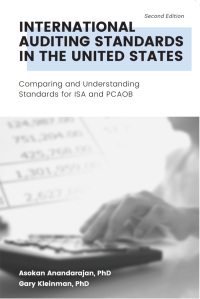

Accounting 440 Project 2-Activity Based Costing (F) Craig Company's Warrenton Division inanufactures a variety of products, including Product 33 and Product 44 Recently, competitors have introduced new prod- ucts competing with Product 44 and with other high- volume Warrenton products, at prices substantially lower than Warrenton's prices. To better understand its product costs, Warrenton Division changed Its costing system at the beginning of the most recent year and is considering changing it again. Until the beginning of the most recent year, the Warrenton Division used a costing system that accu- mulated all overhead in a cated it based on direct labor hours; this system was called the one-pool indirect cost system, or OPICS Over a period of many years, the OPICS overhead rate gradually had approached $100 per direct labor hour. Management came to believe that products were sim- ply being penalized for using direct labor, because engineers seemed to be going to wasteful lengths to redesign the direct labor out of products. The results of these design efforts included further increases in the overhead rate. In an attempt to remedy the situation, management implemented a three-pool indirect cost system, or TPICS, at the beginning of the most recent year. TPICS allocates all machine-related overhead based on machine hours, all material-related overhead based on direct material cost, and all remaining overhead based on direct labor hours Warrenton's controller states, "The logic of TPICS was a big improvement over OPICS, but it was really just a first step and we quickly realized it was not enough. We needed a careful study of cost pools and allocation bases to see if we could better capture the economics of producing both high- and low-volume products. The ensuing study revealed substantial costs related to setup activity, plus some material handling costs primarily related to the number of loads of material handled, and materials administration cost primarily related to the number of orders placed with vendors. The study also revealed that engineers' troubleshoot- ing efforts primarily consisted of assisting with setups. To eliminate the penalty for using direct labor, machine houns was selected as the base for allocating costs that have an unclear relationship with output. Based on these decisions, a new cost system was prcD- posed, with the followng overhead cost pools and allocation bases Base Setup hours Loads handled Vendor orders Design hours Pool Machine setup and troubleshooting. Material handing Materials administration Engineering design Machine operation and all remalning overhead. Machine hours Because of the large number of products manufac- tured at Warrenton, management has decided to focus initially on just two products: 33, which is rep- resentative of most of Warenton's low-volume prod- ucts; and 44, a representative high-volume product The following information pertains to the most recents year's operation of the arrenton Division. For brevity, details for products other than 33 and 44 ares not shown, but the division's totals are given in the last column. single cost pool and allo- Accounting 440 Project 2- Activity Based Costing (F) Craig Company's Warrenton Division manufactures a variety of products, including Product 33 and Product 44. Recently, competitors have introduced new prod- ucts competing wih Product 44 and with other high volume Warrenton products, at prices substantially lower than Warrenton's prices To better understand its product costs, Warrenton Division changed its costing system at the beginning of the most recent year and is considering changing it again. Until the beginning of the most recent year, the Warrenton Division used a costing system that accu- mulated all overhead in a slngle cost pool and allo- cated it based on direct labor hours, this system was called the one-pool indirect cost system, or OPICS. Over a period of many years, the OPICS overhead rate gradually had approached $100 per direct labor hour. Management came to believe that products were sim- ply being penalized for using direct labor, because engineers seemed to be going to wasteful lengths to redesign the direct labor out of products. The results of these design efforts incdluded further increases in the overhead rate. in an atempt to remedy the situation, management implemented a three-pool indirect cost system, or TPICS, at the beginning of the most recent year. TPICS allocates all machine-related overhead based on machine hours, all material-related overhead based on direct material cost, and all remaining overhead based on direct labor hours Warrenton's controller states, "The logic of TPICS was a big improvement over OPICS, but it was really just a first step and we quickly realized it was not enough. We needed a careful study of cost pools and allocation bases to see if we could better capeure the economics of producing both high- and low-volume products. The ensuing study revealed subetantial costs related to setup activity, plus some material handling costs primarily related to the number of loads of material handled, and materials administration cost primarily related to the number of orders placed with vendors The study also revealed that engineers' troubleshoot- ing efforts primarily consisted of assisting with setups. To eliminate the penalty for using direct labor, machine hous was selected as the base for allocating costs that have an unclear relationship with output Based on these decislons, a new cost system was pro- posed, with the followng overhead cost pools and allocation bases Bese Pool Setup hours Loeds handed Vendor orders Design hours Machine setup and troubleshooting. Meterial handing Materals administration. Engineering design Machine operation and all emaining ovehead. Machine hous Because of the large number of products manufac- tured at Warrenton, management has decided to focus initially resentative of most of Warenton's low-olume prod- ucts; and 44, a representative high-volume product The following information pertains to the most recent. year's operation of the Warrenton Division. For brevity, details for products other than 33 and 44 are not shown, but the division's totals are given In the last column. on just two products: 33, which is rep








